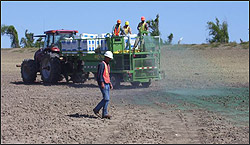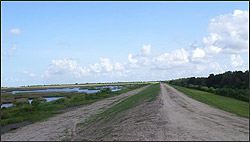Following Hurricane Katrina, an Interagency Performance Evaluation Task Force (IPET) was convened to find scientific and engineering answers to questions regarding the functioning of the New Orleans levee system during the storm. IPET was established by the Chief of the U.S. Army Corps of Engineers and includes more than 150 nationally recognized experts from more than 50 different organizations (eight federal, state and local government agencies; 25 universities and 23 private sector firms).
According to the IPET Report, four of the 50 major levee breaches caused by Hurricane Katrina resulted from foundation-induced failures. The remainder were caused by a combination of overtopping and scour. “Scour” refers to the erosion of earthen levee due to wave and water friction.
To address these issues, some levees and floodwalls have been (or are in the process of being) raised and in some areas widened. Additionally, scour protection will be added to some areas in the form of armoring, which protects earthen levees from erosion. There are many types of levee armoring. |
Effects of scour on a levee and floodwall
near the Inner Harbor Navigation Canal
|
| The most common and important form of armoring on earthen levees is grass. Some additional armoring examples include rip-rap (large stones), turf-reinforced mats, and concrete slabs. In some repaired areas, rip-rap armoring has been reinforced with grout to lock the large stones in place and solidify the protective layer. Critical areas for scour protection include transition points where levees and floodwalls abut; where pipelines cross levee alignments; at floodwalls, particularly in densely populated areas; and where levees are directly exposed to large sections of open water (e.g. the New Orleans East and St. Bernard levees adjacent to Lake Borgne that suffered massive damage during Hurricane Katrina). |
 |
 |
| In preparation for adding grass armor to a levee, dirt is scarified and then sprayed with a grass seed hydro-mulch. A wood-cellulose fiber is added for moisture during seed germination and to prevent erosion before growth. |
Later, growth is monitored to ensure a healthy root system anchors grass to the earth and that blades of grass shield the dirt from erosion. |